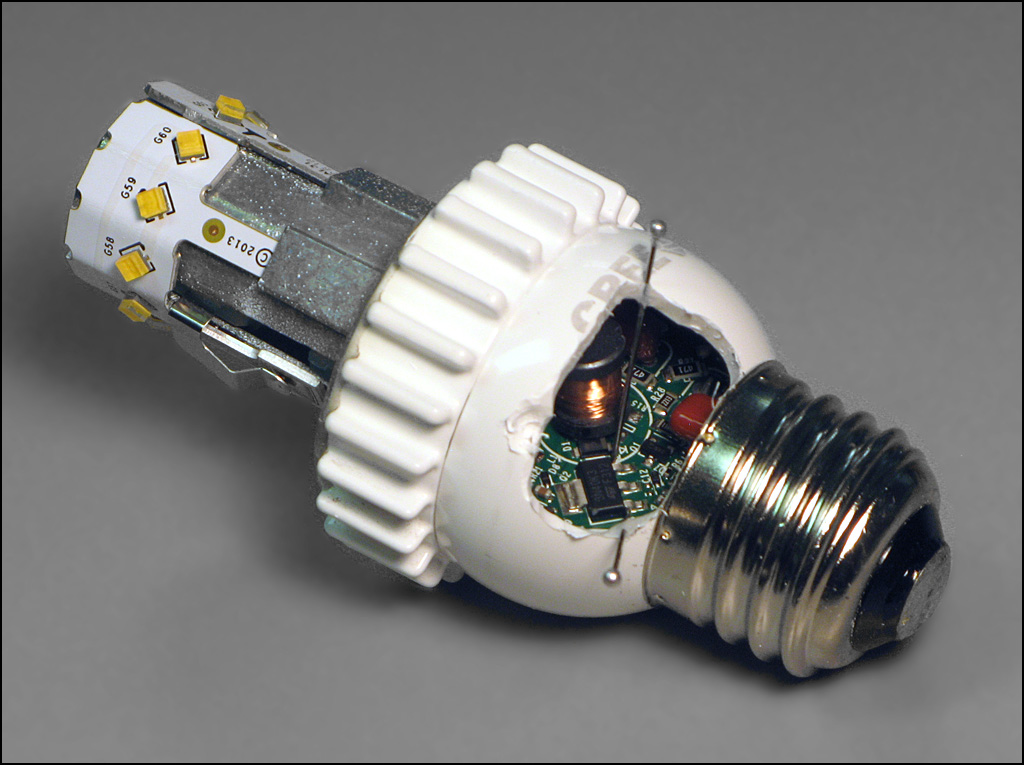
We've already looked much more closely into the actual light emitting elements, HERE.
The purpose of this post is document the remaining elements, notably the power supply that sits inside the base of each bulb.
Extracting the power supplies from two different size bulbs, here is what we see. 40-watt equivalent on the top, 60-watt equivalent on the bottom.
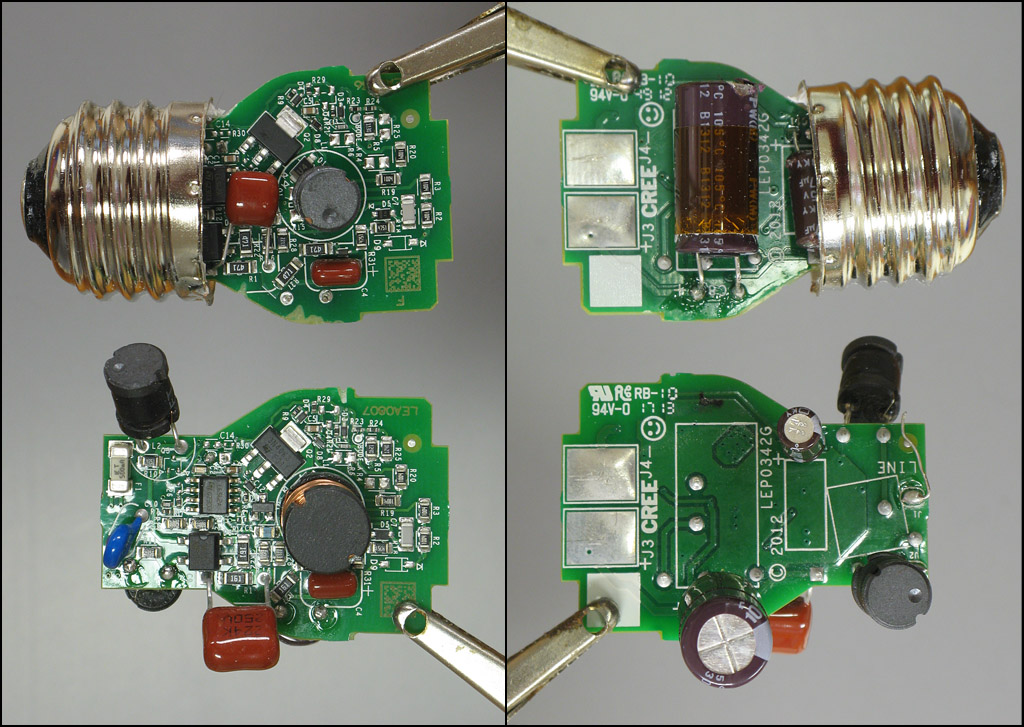
It's not immediately obvious because I've prepared the two boards in different ways, but these two power supplies are almost identical. Actually the circuit board itself is identical; the higher power card has one larger inductor and capacitor, some of the resistor values are different, and the lower power card is missing one of two paralleled resistors (R25). Interestingly, the main filter cap is identical: 10µF 315V.
The major chips are labeled with their types. They are:
MCC MB4S, a bridge rectifier.
L6562A, a power factor controller (PFC)
3N40K3, a power MOSFET switching element
Combined with the three chokes and assorted capacitors on the card, this combination of chips points pretty strongly to a power supply that works as outlined in Chapter 3 of ON Semiconductor's Power Factor Correction Handbook. Very briefly, the circuit rapidly alternates between applying full line voltage across an inductor to build up a current in it, then switching connections so as to route that current into a capacitor that feeds the load.
The clever part of this circuit is that the duty cycle of the switching element is systematically changed as the AC line power cycles so that current drawn from the mains tracks closely with the voltage across them. This mimics a resistive load like ordinary incandescent bulbs. The relationship has several nice properties for the power distribution system, notably that a) it minimizes power losses in the distribution system and b) it minimizes interference between devices. There are standards in place for how well modern devices must match voltage and current. I was intrigued to learn that those standards actually specify performance in terms of total harmonic distortion of the input current, up to and including the 39'th harmonic of the applied power. (Yes, 39th! See page 9 of the aforementioned Handbook.)
Armed with this new and intriguing information, of course I could not resist exploring further. So I set up some instrumentation and measured current flow and light output of three different types of lights: 1) 60-watt incandescent, 2) 40-watt equivalent Cree LED, and 3) Jansjö LED.
The results were really quite interesting. On the left we have voltage and current for each type of light, and on the right we have light output as monitored by a photodetector. (The bottom straight line on the right side is dark reference.)
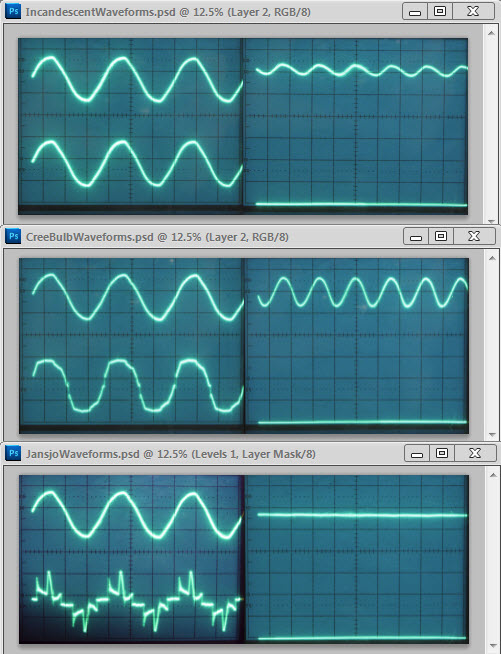
What the waveforms show us are that:
1. The incandescent bulb performs exactly as we might expect. Current tracks voltage perfectly, and the light output has a modest amount of ripple at twice the line frequency. (That's 120 Hz flicker here in the US.)
2. The Cree power supply does a pretty good job of making current track voltage like a resistive load. I was surprised to see sinusoidal ripple in the light output, and even more surprised to see so much of it. This Cree bulb has about 3 times the ripple of an ordinary incandescent. This would be no problem for photography as long as the camera is set to roughly 1/120 second or any multiple of that, but it would not be a good idea to use very short exposure times with these Cree bulbs.
3. The Jansjö light is basically the exact opposite of the Cree -- the input waveshaping is atrocious, but the light output has so little ripple that I can't even measure it.
Of course I couldn't resist checking some of my understanding by directly measuring some of the innards of the power supply.
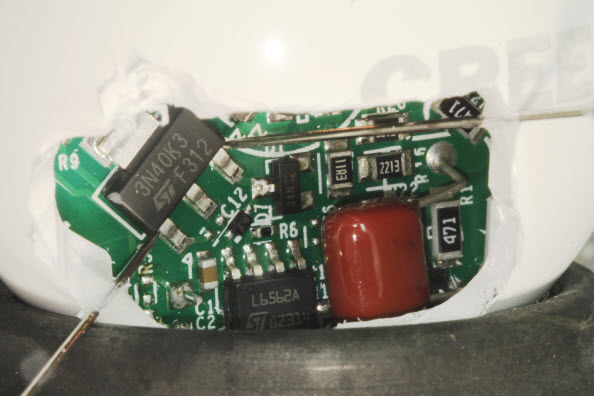
Here are waveforms across the MOSFET switching element. The first image is an overview of the waveform across 6 half-cycles of applied power.
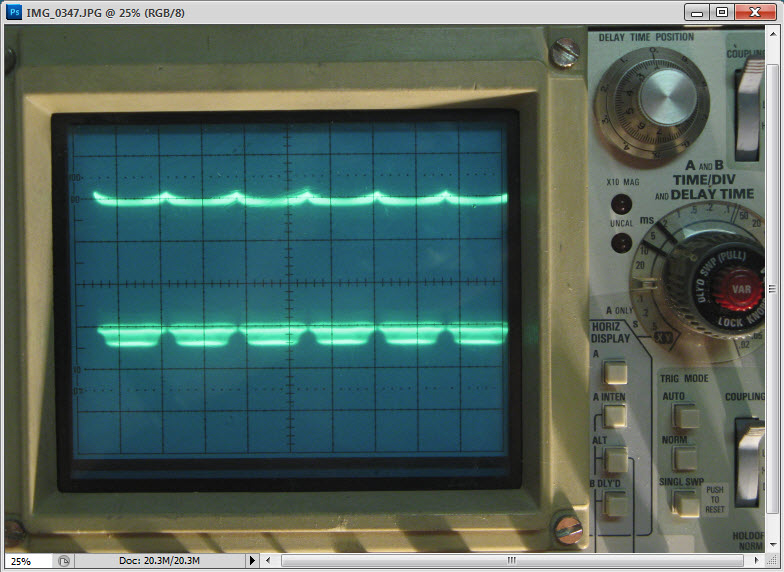
These other sets show a much closer view of the waveform at early and mid half-cycle. Left side shows the point in the cycle where the right-side closer view was taken using delayed sweep. You can see the big change in duty cycle that accomplishes waveshaping of the input current. Sweep rate for these latter curves is 10 µs per division, indicating a switching frequency in the range of roughly 120-150 KHz.
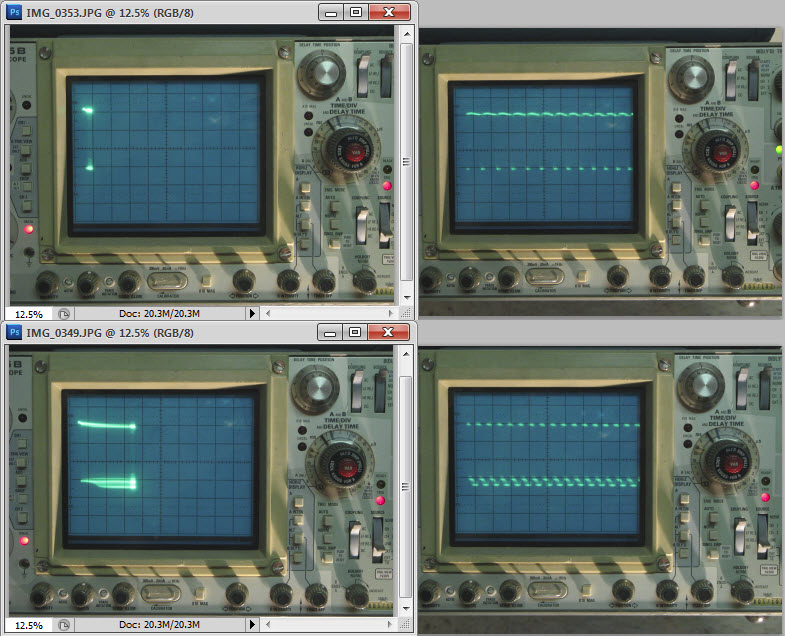
Anybody sticking with this post to the end, I salute you!
I also offer a brief question of economics...
By observation, the Cree "40-watt" and "60-watt" bulbs are identical except for the sizes of a very few cheap components. Why is it, then, that my local Home Depot store sells them for $7 and $10 respectively?
--Rik
